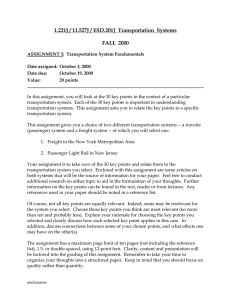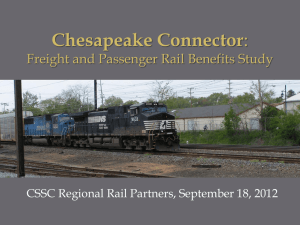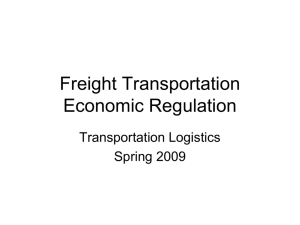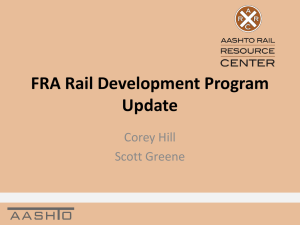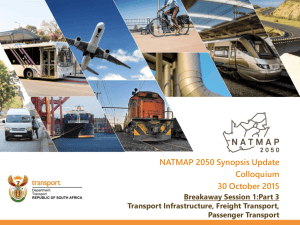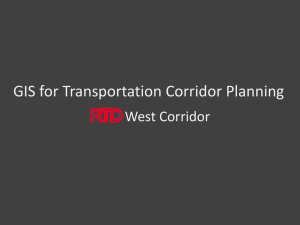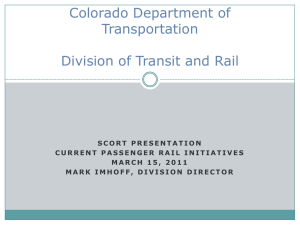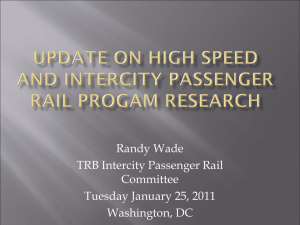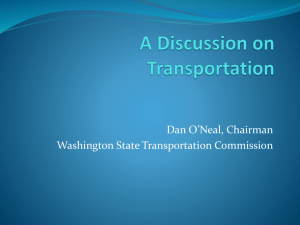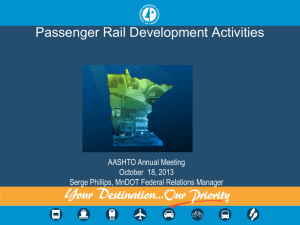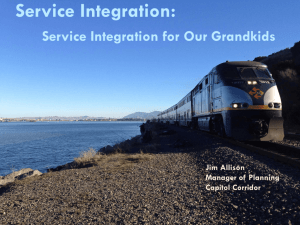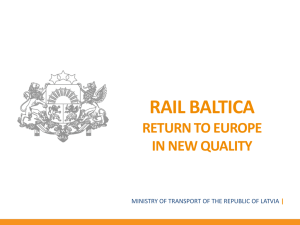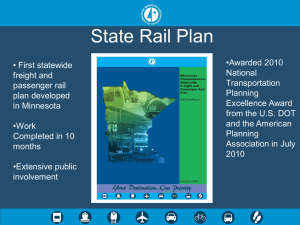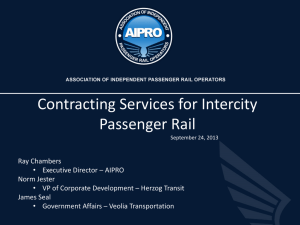NCHRp 08-86 UNDERSTANDING CAPACITY MODELING FOR
advertisement
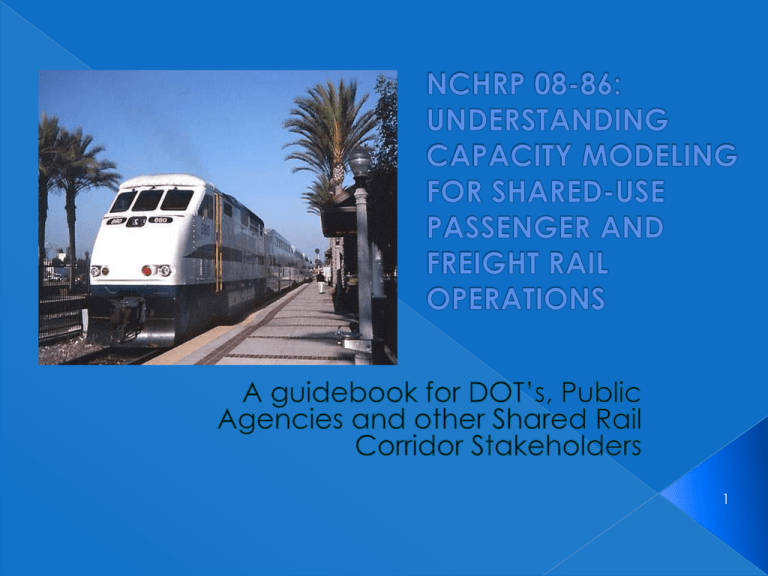
1 NCHRP Report 657 is the general guidebook for implementing passenger service on shared corridors This guidebook “drills down” on the issue of service capacity assessment and modeling as these elements often comprise the biggest challenge to developing a long-term partnership 2 AASHTO’s Standing Committee on Rail Transportation (SCORT) 3 Justin Fox, CDM Smith David Simpson With assistance from › Alan Bing › Bruce Horowitz › Andy Cebula › Om Kanike › Paula Hirsch 4 › Public transportation agencies are increasingly considering rail service options to improve passenger mobility › Agencies are engaging freight railroads given that new rail corridors are very costly and difficult to build › Agency staff often lack knowledge of rail line capacity planning methods and issues 5 Produce a guidebook for public sector agencies that will help them interact more effectively with freight railroads and other track owners in planning and managing line capacity for shareduse operations 6 Three essential activities › Outreach to stakeholders › Description of capacity analysis tools and methodologies › Illustrative case studies 7 Stakeholder target groups › Freight railroads hosting passenger services › Public agency sponsors of passenger trains on freight railroads and Amtrak’s Northeast Corridor (NEC) › Amtrak › Federal Railroad Administration (FRA) 8 › Standards for transparency of modeling inputs and outputs vary widely › Long-term view of corridor needs is essential to ensure appropriate targeting of capital and to build confidence of all parties in the process › Robust analysis of service capacity needs and issues, including modeling, is essential to building a solid foundation for a corridor partnerships 9 Manual methods › String line analysis and grid time analysis Operations simulation › Rail Traffic Controller (RTC), RAILSIM, RAILS2000, NCFRP’s Web-based FreightPassenger Rail Corridor Project Screening Tool, aka Shared-use Tool (SU Tool) Other methods › Manual, statistical, simulation, etc. › Proprietary, details less well known 10 Manual methods › Pros: Easy to do, inexpensive, limited data requirements › Cons: Not applicable to complex rail environments Simulation › Pros: Robust, comprehensive analysis capability › Cons: Intensive data and resource requirements; potentially very expensive; getting freight railroad data may require confidentiality guarantees 11 Also known as a time-distance diagram, a string line shows movements of trains over a track segment 12 One-way grid time: Time required for train to exit eastern siding at Point B and enter western siding and stop at Point D (30 minutes) 13 At top: Maximum allowable speeds in grey; train progress in black 14 Manual methods › Feasibility studies › Conceptual planning studies › Alternatives screening Operations simulation › Highly detailed operations analyses › Planning for detailed improvements to enhance line capacity over time › Reaching agreement between host railroad and public agency service sponsor on shared-use contract terms 15 Conceptual planning study Methodology: Grid time analysis Objective: Link capital investments to train volumes over a 15-year period LOSSAN study area in Southern California: Line thickness shows relative train volumes 16 Detailed planning study Methodology: RTC operations simulation Objective: Identify capacity improvements to support new commuter trains, high speed rail trains, and increasing freight train volumes Study area: Amtrak’s Springfield Line highlighted 17 Conceptual planning study Methodology: Grid time analysis, RTC, and Shared-use Tool application Objective: Compare results of three analysis methodologies Study Area: BNSF’s Scenic and Bellingham’s Subdivisions 18 Detailed planning study Methodology: RTC operations simulation Objective: Deliver a long-term shared investment program for new intercity and increasing rail freight services Route shown in two segments: Chicago to Bloomington, then Bloomington to St. Louis 19 Build trust between stakeholders: this is a long-term relationship, not a “purchase of space” Take the long view. What is the “vision of success” 20 years out, and is it consistent with your short term requests? 20 Acknowledge the large scale network impacts of local passenger operations: the most cost effective mitigations may be remote from the direct service area › May require agency to explain benefits of improvements made distant from a subject corridor Rigorous, detailed capacity assessment and modeling is a worthy investment, and delivers a framework to assess future changes in corridor needs 21 Add link here 22
